On a recent visit to Central Park I chanced upon a singing House Wren Troglodytes aedon and followed it back to a 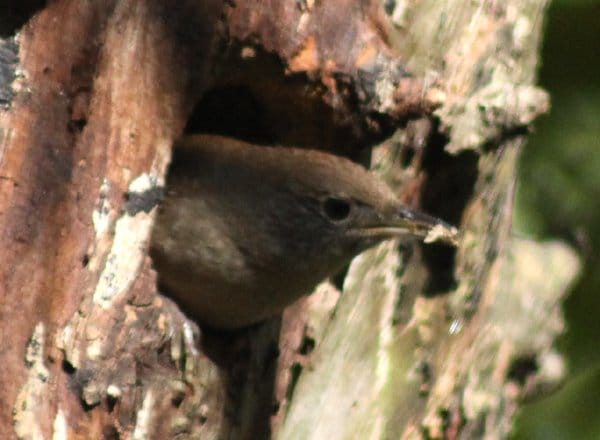 hole in a dead stub of a tree. It was actively removing tiny wood chips that had probably been there since the hole was excavated. If I had to guess I would say that the hole had been excavated by a Downy Woodpecker as a winter roost hole, but that is raw speculation and I really have no idea, though at one point during the five minutes I watched the wren drove a female Downy Woodpecker away from the vicinity of the hole.
hole in a dead stub of a tree. It was actively removing tiny wood chips that had probably been there since the hole was excavated. If I had to guess I would say that the hole had been excavated by a Downy Woodpecker as a winter roost hole, but that is raw speculation and I really have no idea, though at one point during the five minutes I watched the wren drove a female Downy Woodpecker away from the vicinity of the hole.
What I found interesting was how vigilantly the wren defended the hole considering that it was a male and there was clearly no nest yet. But male House Wrens prepare several possible nest locations and stuff them with sticks in the hopes that at least one of the spots they choose will catch the fancy of a fertile female who will then choose the male as a mate. Stories abound of House Wrens going so far as to destroy other birds’ nests, even puncturing their eggs, in order to procure potential nesting locations so I really wasn’t surprised but I was entertained.
A fellow Central Park birder let me know that the wren had even been seen doing battle with the scourge of cavity-nesters wherever they have been introduced, the House Sparrow. I saw no House Sparrows in the vicinity so here’s hoping that the House Wren has driven them away for good and that he has found enough spots with which to impress his lady love. If I get a chance I will check back and let you all know if he nests or not.
House Wren just after it chased off a Downy Woodpecker
House Wren dropping wood chips
House Wren in potential nest cavity
House Wren taking off with some wood chips
If you liked this post and want to see more great images of birds make sure to check out 10,000 Clicks, our big (and growing) page of galleries here at 10,000 Birds.
………


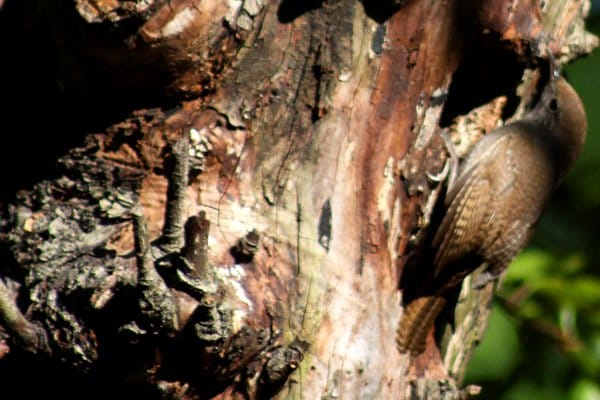
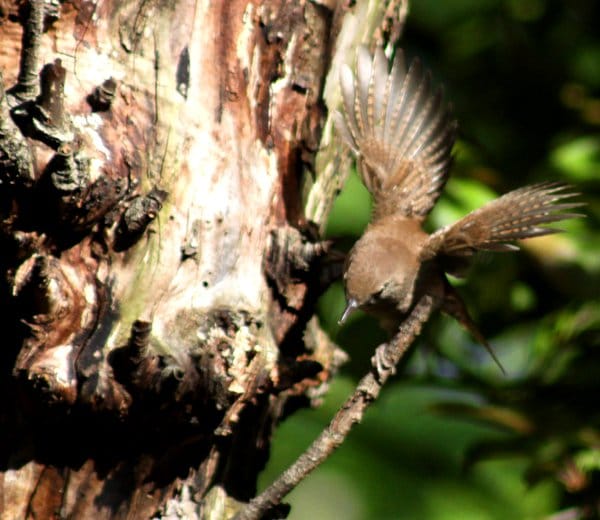
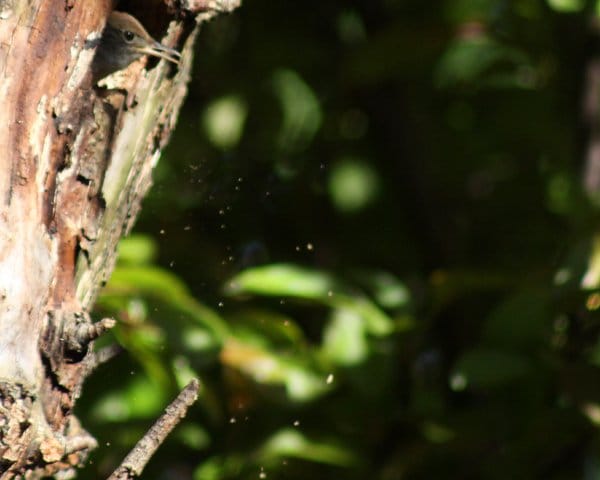
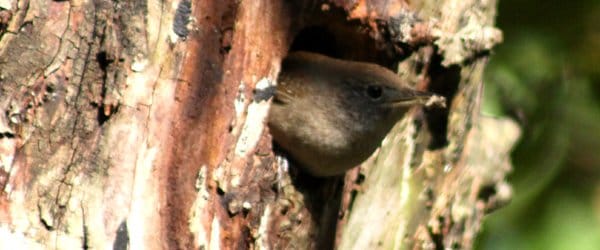
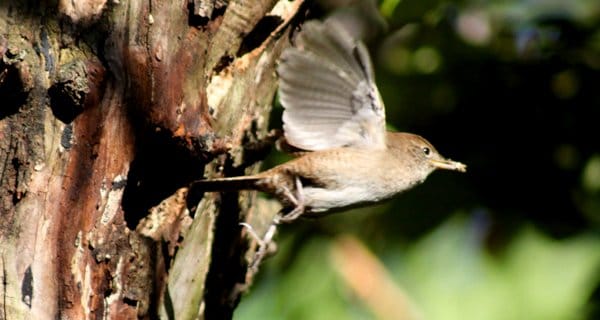











Fun post. Industrious little guy. I put up an urban bird house in Portland (OR) recently, and I’m hoping a wren or some other native bird finds it.